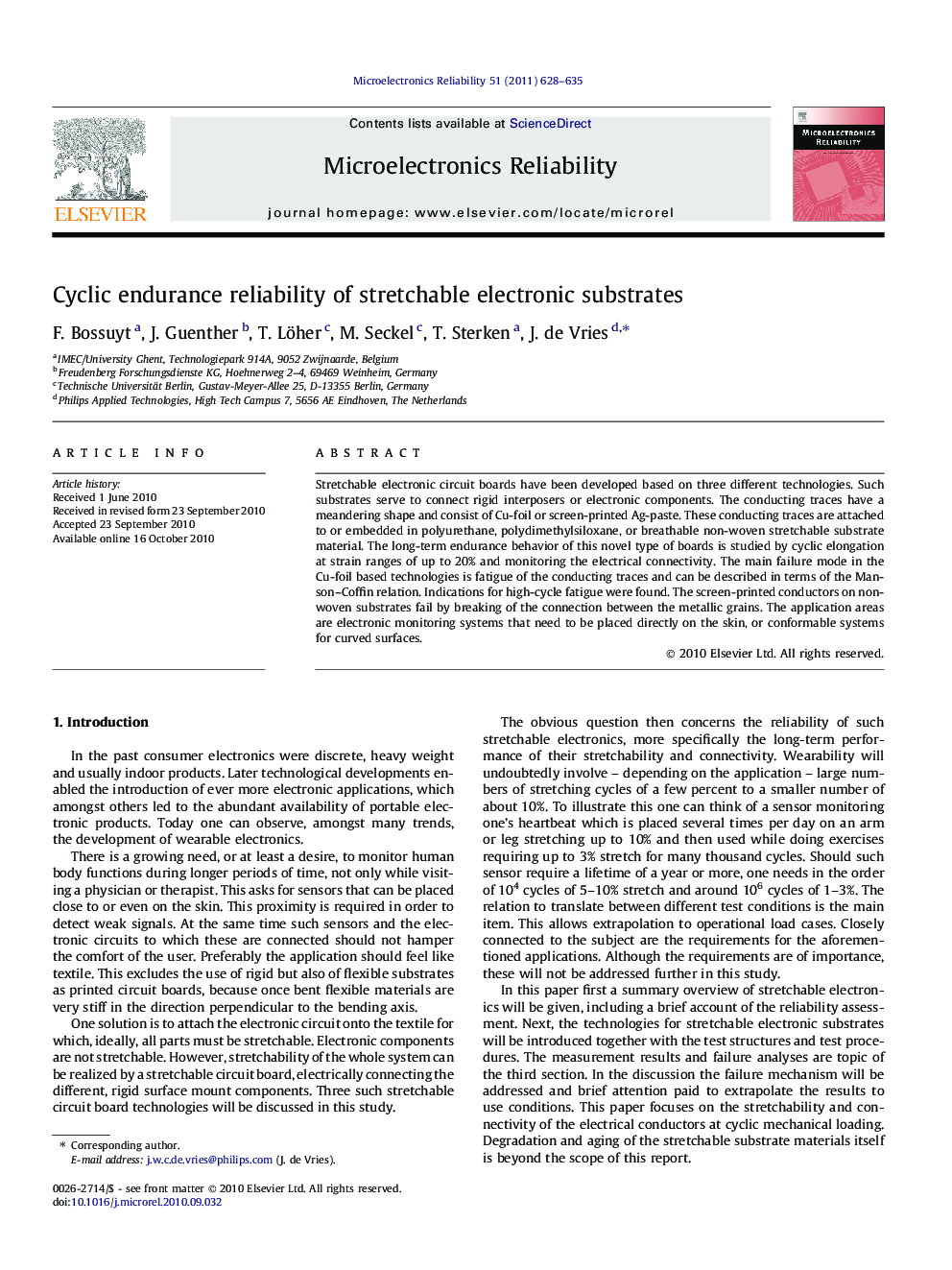| Article ID | Journal | Published Year | Pages | File Type |
|---|---|---|---|---|
| 549456 | Microelectronics Reliability | 2011 | 8 Pages |
Stretchable electronic circuit boards have been developed based on three different technologies. Such substrates serve to connect rigid interposers or electronic components. The conducting traces have a meandering shape and consist of Cu-foil or screen-printed Ag-paste. These conducting traces are attached to or embedded in polyurethane, polydimethylsiloxane, or breathable non-woven stretchable substrate material. The long-term endurance behavior of this novel type of boards is studied by cyclic elongation at strain ranges of up to 20% and monitoring the electrical connectivity. The main failure mode in the Cu-foil based technologies is fatigue of the conducting traces and can be described in terms of the Manson–Coffin relation. Indications for high-cycle fatigue were found. The screen-printed conductors on non-woven substrates fail by breaking of the connection between the metallic grains. The application areas are electronic monitoring systems that need to be placed directly on the skin, or conformable systems for curved surfaces.
